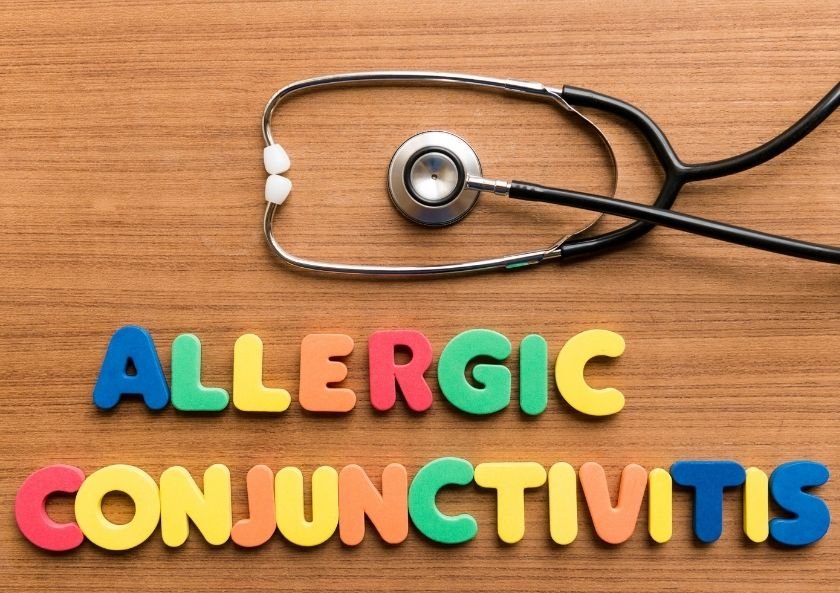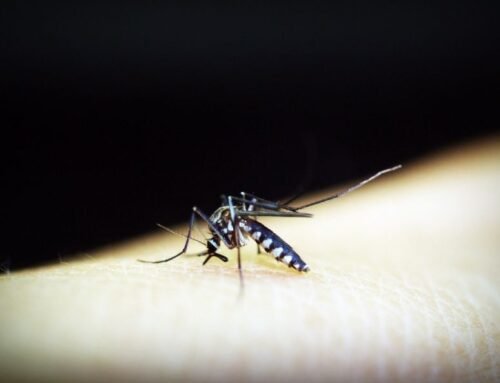Allergic conjunctivitis is a very common disease that occurs with allergic mechanisms. It is usually accompanied by other allergic diseases, especially nasal allergy. It is more common in children. The most important symptoms are; itching, watering and redness in the eyes. With the use of appropriate drugs, the findings are easily controlled.
Allergic conjunctivitis is inflammation that occurs in the part of the eye called the conjunctiva with allergic mechanisms. The conjunctiva is a thin skin that covers the white part of the eyes and inside the eyelids. It consists of specially adapted transparent cells.
What is the frequency?
Allergic conjunctivitis and its frequency have increased in recent years like other allergic diseases. It is reported that it is seen in 10-20% of the world.
What is the age incidence?
It is more common in children and adolescents. It gradually decreases in older ages.
What are the causes?
Allergic conjunctivitis, like other allergic diseases, occurs with the interaction of genetics and environment. It occurs as a result of an allergic reaction that occurs when the allergen touches the eye surface in people who are sensitive to allergens. Mechanisms are similar to other allergic diseases. It is accompanied by asthma and eczema, especially allergic rhinitis.
There are three different types:
- Acute allergic conjunctivitis
- Seasonal allergic conjunctivitis
- Perennial Allergic conjunctivitis
Acute allergic conjunctivitis is an allergic reaction that begins suddenly as a result of exposure to an allergen. After an exposure, symptoms such as itching, redness, watering, and swelling of the eyelids appear in a short time, such as half an hour. It resolves within 24 hours after the exposure to the allergen disappears.
Seasonal allergic conjunctivitis usually occurs in people allergic to pollen in spring and summer. It is usually accompanied by allergic rhinitis (hay fever). Findings develop more slowly in a few days or weeks.
Year-round allergic conjunctivitis progresses chronically with increasing and decreasing complaints throughout the year in people sensitive to domestic allergens such as house dust mite, mold and pets.
What are the symptoms?
Itching is the most important finding. If there is no itch, another diagnosis should be considered. Other findings are redness and watery eyes. Watery eyes are like crying, they are not inflamed. Swelling of the eyelids is common. Burning of the eyes and light disturbance may occur.
Since allergic conjunctivitis is usually accompanied by a nasal allergy, the patient has symptoms such as nasal congestion, itching, sneezing, discharge and darkening under the eyes.
Eye pain and vision loss are not signs of allergic conjunctivitis. The patient may have a more serious condition, so it should be urgently directed to an ophthalmologist.
What to do if your child has symptoms?
Allergic conjunctivitis is often accompanied by other allergic diseases. Therefore, it would be appropriate for your child to be evaluated as a whole in terms of allergic diseases and to be seen by a pediatric allergy specialist in order to be performed allergy tests.
How to prepare when going to the doctor for allergic conjunctivitis?
It is useful to bring the previous examinations and x-rays with you.
It will be useful to bring with you the previous examinations and x-rays, the medications that he has used or is currently using while going to the pediatric allergist. Thus, a healthier assessment is made in a short time. Also, unnecessary repetitions of the same tests are prevented.
If it will not be a problem, stop some medications 1 week before consultation!
Discontinue allergy syrup and pills, cough and cold medications 1 week before arrival. When allergy testing on the skin is required, these drugs should not be used because they affect the test result. Only paracetamol containing antipyretics and antibiotics, breathing sprays and vapors do not affect the allergy test. It can still be used. But if your child has a lot of complaints and needs to use their medication, then continue. There is no harm in delaying allergy tests until the disease is under control.
The child does not need to be brought hungry.
For allergy tests, it is not important whether the child is hungry or full. So there is no need to bring hungry. On the contrary, it would be better if it is full so that the blood glucose does not drop due to stress.
How is allergic conjunctivitis diagnosed?
As with all allergic diseases, a detailed history and examination is very important in diagnosis. The presence of itching, redness and watery symptoms in the history and repetition of these findings in spring and summer strongly suggests allergic conjunctivitis. Allergic rhinitis, allergic eczema and asthma, and an allergic disease in the family support the diagnosis.
In addition to the appearance of redness and watery eyes in the examination, it is important in the diagnosis to have findings related to allergic cold, asthma and allergic eczema.
Allergic conjunctivitis or infection?
- While itching is the most important finding in allergic conjunctivitis, it is not common in infection.
- Allergic conjunctivitis is usually seen in both eyes, while the infection is usually unilateral.
- While there is no inflammatory discharge in allergic conjunctivitis, it is clearly seen especially in bacterial infections.
What are the laboratory tests in diagnosing allergic conjunctivitis?
The diagnosis of allergic conjunctivitis is not made with laboratory tests, but tests are very important both for diagnosis and for the correct monitoring and treatment of the disease.
Allergy tests are very important in patients with allergic conjunctivitis!
Because it is necessary to determine whether the patient is sensitive to any allergen in order to be able to successfully treat and monitor the disease. If an allergen sensitivity is detected, measures should be taken to avoid that allergen, and drugs should be adjusted accordingly. If the findings cannot be controlled despite protection and drug treatment, immunotherapy (allergy vaccine) can be made against that allergen.
The patient’s allergy can be detected by blood or skin testing. But the skin test is more sensitive and reliable. It provides both more economic and faster results. Results are obtained 20 minutes after it is done. For the disease, it is more convenient to conduct allergy tests on the skin after 3 years of age. Because respiratory allergens often create sensitivity after those ages. But if mite sensitivity is suspected, it can also be evaluated at a younger age.
Allergy tests should be done by pediatric allergy specialists, as they are very important in diagnosis and treatment. In addition, immunotherapy (allergy vaccine) decision must be made by pediatric allergy specialists.
How should allergic conjunctivitis be treated?
Treatment of the disease should be done in two ways: prevention and drug therapy.
What are the protection measures?
As protection measures, wearing sunglasses when going out in people with seasonal allergic rhinitis with pollen allergy, not opening the windows of the house and car during the peak season of pollen, using pollen filters; in people with allergic conjunctivitis year-round who has allergy to mites, mold and pets taking anti-allergic mattress covers, reducing the fabric in the child’s room and at home, repairing water leaking places for mold; removing it if possible for pets.
Treatment in acute allergic conjunctivitis
In people with acute allergic conjunctivitis, applying cold compresses to the eyes and using artificial tear drops will reduce the complaints. Rubbing the eye should be avoided. As a medicine, drops containing topical (applied to the eye) vasoconstrictor and antihistamine should be used. If contact lenses are used, they should not be used until it gets better. The findings will improve within 1-2 weeks.
Treatment in seasonal and year-round allergic conjunctivitis
Drug treatment can be applied topically (applied to the eye) and systemically in two ways;
- Topical antihistamine and mast cell balancing eye drops can be used.
- Systemic antihistamines can be used, especially if the patient has also allergic rhinitis. However, by decreasing tears, it can cause dry eyes and as a result can worsen findings.
In seasonal allergic conjunctivitis, drugs should be started to be used 2-4 weeks before the sensitized pollen season, for better control!
What should be done in treatment-resistant patients?
The patient should be reassessed, and situations indicating that another condition lies under should be reviewed.
- Pain and light sensitivity?
- Blurred vision or vision loss?
- Eye redness after wearing contact lenses?
- Presence of non-allergic conjunctivitis findings in the cornea (the transparent part of the eye visible from outside) during the examination by the ophthalmologist?
If the above conditions are not available, cortisone or immunomodulator (cyclosporin, tacrolimus) drugs can be used for a short time in the form of eye drops or pill by mouth.
When should immunotherapy (allergy vaccine) treatment be performed in allergic conjunctivitis?
- If the patient’s findings cannot be well controlled with medications,
- If the patient has allergic rhinitis or asthma in addition to eye allergy,
- If sensitization to an allergen suitable for vaccination is detected in the allergy tests, it will be beneficial to administer vaccines to those patients.
Are complementary and alternative therapies useful in allergic conjunctivitis?
Studies on Chinese herbal therapy, acupuncture, ayurveda and homeopathy are not sufficient today and are not recommended, especially in patients with allergic rhinitis (spring fever).
Will it improve over time?
The frequency and severity of allergic conjunctivitis’ findings in children tend to decrease with advancing age. But usually the findings continue.
As a result;
- Allergic conjunctivitis is inflammation that occurs with allergic mechanisms and involves the part of the eye called the conjunctiva,
- Allergic conjunctivitis is seen in the world at an average of 10-20%,
- Allergic conjunctivitis, like other allergic diseases, occurs as a result of interaction between the gene and the environment,
- Symptoms are redness and watery eyes, especially itching,
- The diagnosis is made through a good history, examination and allergy tests,
- Treatment is carried out with various eye drops and oral medications if an allergen is detected,
- If the allergen sensitivity is appropriate in patients whose findings do not improve with medication, it is appropriate to perform allergy vaccine (immunotherapy) treatment,
- The benefits of complementary and alternative treatments have not been demonstrated,
- Findings in children tend to decrease over time.






